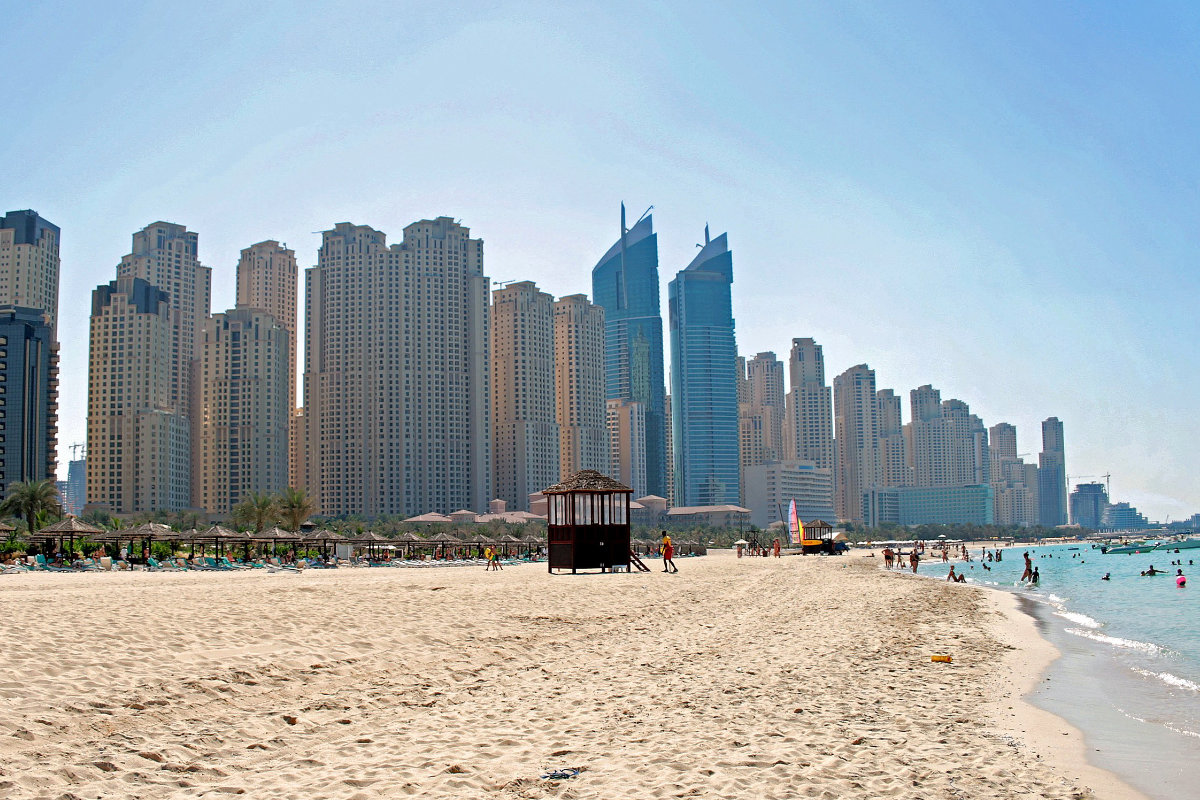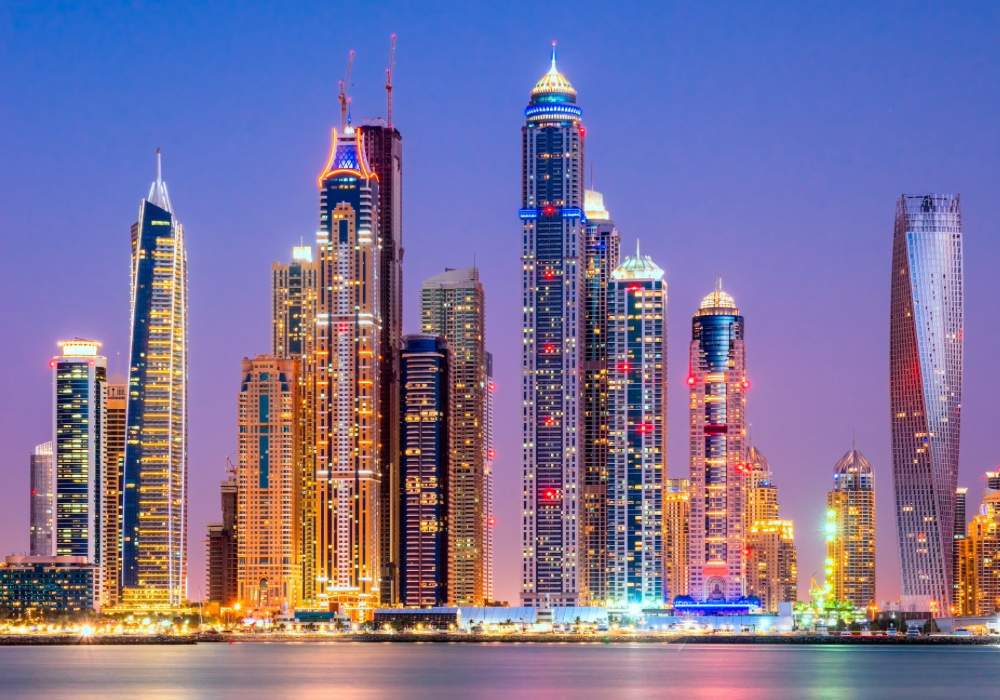Climate Characteristics of Dubai
Dubai’s climate is categorized as arid, falling within the subtropical desert category. Its location near the Tropic of Cancer contributes to its hot and dry weather pattern. The climate is generally warm all year round, with high temperatures and humidity levels.
The city experiences two primary seasons: the hot season and the cooler season. The hot season lasts from April to October, with temperatures often exceeding 40°C (104°F). On the other hand, the cooler season lasts from November to March, with temperatures ranging from 18°C to 30°C (64°F to 86°F).
The humidity level in Dubai can be exceptionally high during the summer months, making the heat feel even more intense. Conversely, the winter months offer more comfortable weather, with lower humidity levels and cooler temperatures.
Dubai’s proximity to the Arabian Desert influences its weather patterns, resulting in limited rainfall throughout the year. The city receives an average of 100mm of rain per year, mostly occurring in the winter months.
The frequent sandstorms are another unique weather phenomenon in Dubai, particularly during the transitional periods between the two main seasons. These sandstorms can reduce visibility and affect air quality temporarily.
Understanding the climate characteristics of Dubai is essential for both residents and tourists. Being aware of the weather patterns helps in planning outdoor activities, selecting appropriate clothing, and taking necessary precautions to stay safe and comfortable.
Seasonal Overview: What to Expect Each Season
Summer (Hot Season): Running from April to October, the summer in Dubai is characterized by scorching temperatures and high humidity levels. The daytime temperature can easily exceed 40°C (104°F), with nights remaining warm as well. During this period, outdoor activities are limited, and air conditioning becomes a necessity.
Beaches and pools may still be enjoyed early in the morning or late in the evening when the heat is less intense. Many residents and tourists opt to explore indoor attractions like malls, museums, and indoor entertainment centers during the summer months.
Winter (Cooler Season): The winter season in Dubai, from November to March, offers a welcome respite from the intense heat. With daytime temperatures ranging from 18°C to 30°C (64°F to 86°F), the weather is pleasant for outdoor exploration.
Winter is the ideal time to enjoy outdoor markets, beach activities, desert safaris, and sightseeing. It’s also the season when most of the city’s outdoor festivals and sporting events take place.
Occasional rainfall may occur during the winter months, but it is generally light and short-lived. Packing a light jacket or sweater for the evenings is advisable as temperatures can drop a bit after sunset.
Travel Tips: Preparing for Dubai’s Climate
When planning a trip to Dubai, understanding the weather is crucial to ensure a comfortable and enjoyable experience. Here are some travel tips based on the city’s climate:
Summer Travel: If visiting during the summer months, be prepared for intense heat. Wear light and breathable clothing, stay hydrated, and plan indoor activities during the peak heat hours. Sunscreen, sunglasses, and hats are essential.
Winter Travel: Winter in Dubai is mild and pleasant, making it the ideal time for outdoor activities. Pack versatile clothing that can be layered, and don’t forget to include swimwear if you plan to enjoy the beaches and pools.
Regardless of the season, always check the local weather forecast before your trip to make any necessary adjustments to your plans and packing list. Keep in mind that the weather can change, and being prepared will ensure a more comfortable stay in Dubai.
Understanding the Impact of Dubai’s Climate on Lifestyle and Activities
Dubai’s climate significantly influences the daily life and activities of both residents and tourists. The extreme temperatures, particularly in the summer months, shape the way people approach their routines, social engagements, and outdoor pursuits.
Outdoor Activities: The cooler season is the best time for outdoor activities in Dubai. From beach outings to desert safaris, hiking, and golfing, the pleasant weather allows for a wide range of outdoor experiences. Conversely, the hot season limits outdoor pursuits to early morning or late evening hours, leading to an increased interest in indoor entertainment options.
Architecture and Infrastructure: Dubai’s architecture and infrastructure are designed to combat the intense heat. Buildings are constructed with reflective materials and shades to minimize heat absorption. Many public places, including bus stops and metro stations, are air-conditioned to provide comfort to commuters.
Shopping and Dining: The hot season sees a surge in indoor shopping and dining activities. Dubai’s extravagant malls, with their diverse array of shops, restaurants, and entertainment facilities, become bustling hubs where people gather to escape the heat.
Cultural Considerations: Traditional Emirati clothing, such as the flowing ‘Dishdasha’ for men and the ‘Abaya’ for women, is designed to be both modest and suitable for the hot climate. The fabrics are often light and breathable, providing comfort in the heat.
Health and Wellbeing: The climate in Dubai also impacts health and wellbeing. The intense summer heat can lead to dehydration and heat-related illnesses if precautions are not taken. Staying hydrated, avoiding prolonged exposure to the sun, and wearing appropriate clothing are essential to staying healthy.
Weather Phenomena Unique to Dubai
In addition to the general climate characteristics, Dubai experiences some unique weather phenomena that are worth exploring:
Sandstorms: Dubai’s desert surroundings make it susceptible to sandstorms, particularly during the transitional periods between seasons. These storms can be sudden and may affect visibility and air quality. Residents and visitors are advised to stay indoors during a sandstorm and to take precautions such as keeping windows and doors closed.
Fog: Fog is a common occurrence in Dubai during the winter months, particularly in the early morning hours. The fog can be dense and may disrupt traffic and flights. Paying attention to weather alerts and driving with caution during foggy conditions is essential.
Rainfall: Though rare, heavy rainfall can occur in Dubai, leading to flash floods in some areas. The city’s infrastructure is primarily designed to handle arid conditions, so sudden downpours can cause temporary disruptions. Being aware of weather forecasts and avoiding flooded areas are prudent measures during heavy rain.
Overall, Dubai’s climate is a fascinating blend of extremes, from the scorching heat of summer to the pleasant cool of winter, interspersed with unique weather phenomena. Understanding and adapting to the weather in Dubai is an integral part of living in or visiting this vibrant city. Whether you’re planning a vacation, considering relocation, or simply curious about the weather in one of the world’s most iconic destinations, a comprehensive understanding of Dubai’s climate and seasons enriches the experience. Whether embracing the heat of summer with indoor adventures or enjoying the outdoor delights of winter, Dubai offers a climate that, once understood, adds to the allure of this remarkable city.
Sustainability Efforts: Dubai’s government and private sectors are making strides in sustainability to mitigate the environmental impact of the city’s arid climate. From solar energy projects to water conservation initiatives, the city is exploring innovative solutions to utilize its climate advantages.
Festivals and Events: Dubai’s calendar of events and festivals is heavily influenced by its climate. The cooler months host numerous outdoor events such as the Dubai Shopping Festival, Dubai Food Festival, and sporting events like the Dubai Tennis Championships. These events are timed to take advantage of the pleasant weather, attracting visitors from around the world.
Climate-Adapted Cuisine: Even the culinary scene in Dubai is influenced by its climate. Traditional Emirati dishes often include ingredients that are well-suited to the arid environment, such as dates, camel milk, and local fish. The hot climate also leads to a preference for refreshing beverages and cooling desserts.
The climate and weather in Dubai are integral aspects of the city’s identity. They shape the lifestyle, architecture, social activities, and even the culinary preferences of those who live in and visit this unique destination.
Dubai’s unique climate offers a blend of extreme heat and pleasant winter weather. Embracing the city’s weather patterns and planning accordingly can enhance your experience, whether you’re a resident or a visitor.
The understanding of the climate and seasons in Dubai is not only about dealing with the weather but also about exploring and enjoying what the city has to offer. By being aware of the climate characteristics and seasonal changes, you can make the most of your time in this vibrant and dynamic city.

